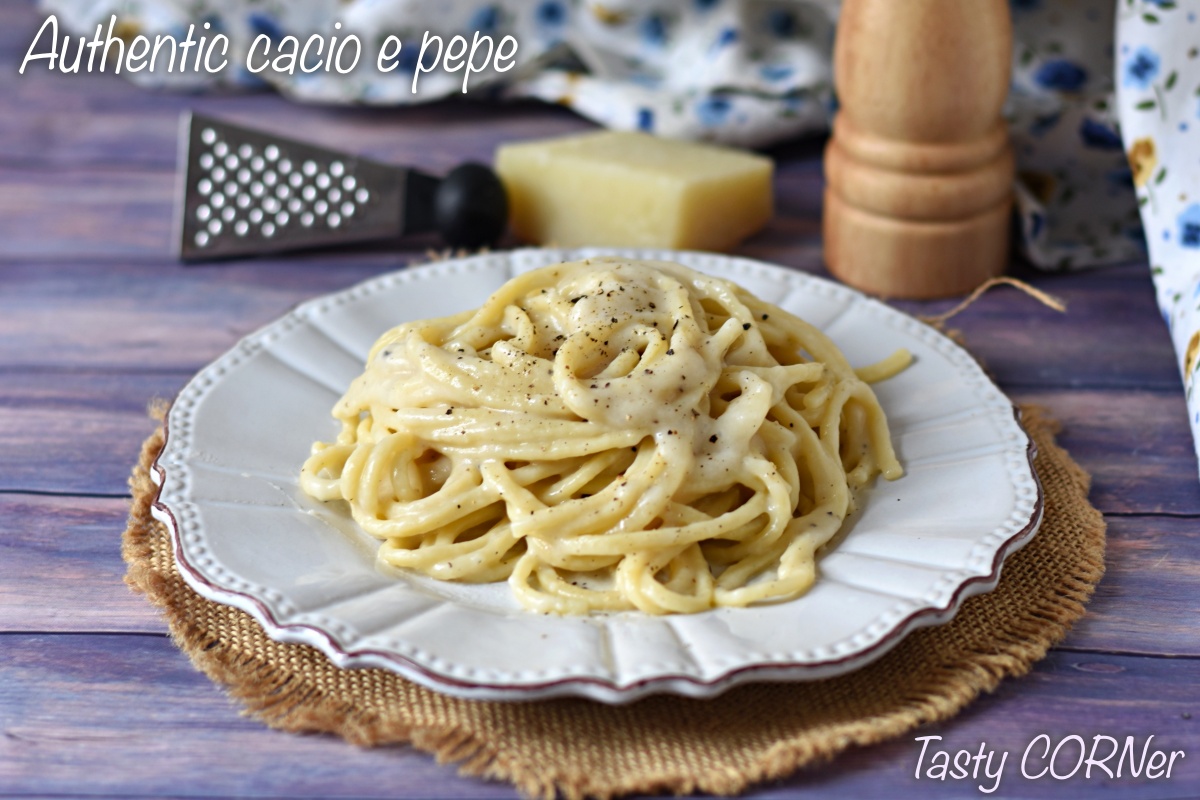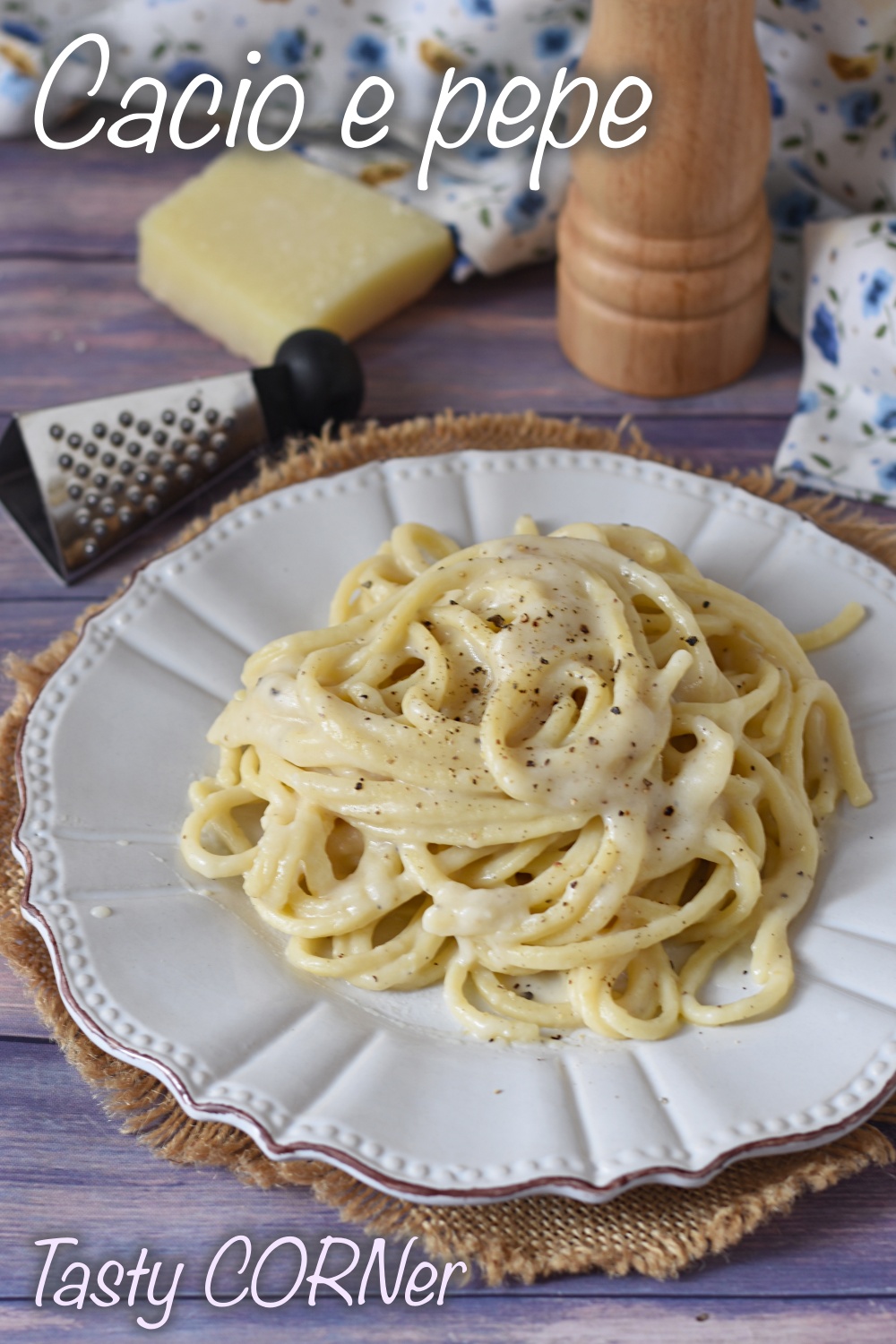Cacio e pepe, along with carbonara and gricia, stands out as one of the most famous and cherished recipes in Roman cuisine. Despite its seemingly simple trio of ingredients—pasta, Pecorino Romano cheese, and black pepper—achieving an authentically creamy cacio e pepe without any lumps is no walk in the park. There are numerous variables and tricks at play to prevent the cheese from clumping, making it entirely plausible for even the most seasoned chef to occasionally get it wrong.
For those eager to dive into the world of crafting authentic cacio e pepe, a dash of patience is essential. Don’t let initial setbacks discourage you; experience is key, and with a bit of trial and error, you’ll find yourself ironing out the kinks. I’m here to assist you by sharing my recipe for a creamy cacio e pepe, along with a handful of tricks and tips for preparing this delicious Italian dish like a pro!!
You might also like:

Video recipe of the day
- DifficultyMedium
- CostCheap
- Preparation time5 Minutes
- Cooking time8 Minutes
- Serving4 servings
- Cooking methodStove
- CuisineItalian regional
- SeasonalityEvergreen
- RegionLazio
Ingredients for the authentic cacio e pepe pasta:
- Power 373,72 (Kcal)
- Carbohydrates 28,89 (g) of which sugars 0,52 (g)
- Proteins 18,25 (g)
- Fat 20,18 (g) of which saturated 10,90 (g)of which unsaturated 0,44 (g)
- Fibers 2,13 (g)
- Sodium 3.449,20 (mg)
Indicative values for a portion of 230 g processed in an automated way starting from the nutritional information available on the CREA* and FoodData Central** databases. It is not food and / or nutritional advice.
* CREATES Food and Nutrition Research Center: https://www.crea.gov.it/alimenti-e-nutrizione https://www.alimentinutrizione.it ** U.S. Department of Agriculture, Agricultural Research Service. FoodData Central, 2019. https://fdc.nal.usda.gov
Tools
How to Prepare Creamy Cacio e Pepe Pasta
 Puoi trovare la versione italiana della ricetta qui!
Puoi trovare la versione italiana della ricetta qui!
Original recipe for spaghetti cacio e pepe
The cacio e pepe sauce should be prepared in the time it takes for the pasta to cook, as you’ll need its cooking water. Bring a generous amount of water to a boil and salt it with about half the coarse salt you would normally use to avoid an overly salty dish. Then, plunge the pasta and cook it for a couple of minutes less than the cooking time indicated on the package.
While the pasta is cooking, focus on the seasoning: grind the pepper with a pestle or grinder and place it in a non-stick pan. Ignite the medium flame and let the pepper toast for about a minute, releasing all its aroma.
With a small saucepan, take some pasta cooking water and pour it into the pan with the pepper. You’ll see it bubble immediately. Let it cook for another ten seconds, then turn off the heat.

Move on to preparing the pecorino cream: in a bowl, put the grated pecorino; take another saucepan of pasta cooking water – now rich in starch – and let it cool for about 20 seconds, then gradually pour it into the bowl with the pecorino, stirring immediately with a fork in quick movements, as if you were beating eggs.
While you combine the pecorino cream, add more water gradually until you form a thick and pasty mixture. It’s not easy to specify the exact amount of water to use; it will be approximately a glass, but keep in mind that you can adjust the sauce density later.

When you’re about to drain the pasta, rekindle the flame under the pan with the pepper. Drain the pasta with spaghetti tongs, so as not to discard their cooking water, and immediately transfer them to the pan.
Sauté the pasta for a minute or two until it’s cooked, moistening it again with a little cooking water. You’ll see that the starch has already formed a sort of creamy texture along with the pepper.
Remove the pan from the heat and let the pasta rest for about twenty seconds, so it’s not piping hot, then transfer it along with its cooking liquid to the bowl with the pecorino cream. Immediately stir with the spaghetti tongs or with two forks, adding a little more cooking water if you see that the cream is too dry or more pecorino if it turns out too liquid.

Garnish the cacio e pepe with freshly ground black pepper and serve immediately.
The traditional ingredients of cacio e pepe and the secret ingredient
To achieve a perfect cacio e pepe with a dense and velvety sauce without lumps, you need to start with the choice of ingredients, which are only three… plus a fourth secret ingredient!
The pasta: here in Rome, the most common pasta format for cacio e pepe is not spaghetti but tonnarelli or spaghetti alla chitarra, fresh egg pasta originally from Abruzzo but widespread throughout central Italy. The reason is simple: fresh pasta releases much more starch during cooking, contributing to making the pecorino sauce creamier. Also, the rough surface of this pasta better retains the condiment. If you don’t have tonnarelli, you can opt for high-quality dry spaghetti, bronze-drawn, quite rough, and not too thin.
The cacio: the “cacio” in cacio e pepe is Pecorino Romano DOP, which for a perfect result should be mildly aged. The more aged the cheese, the less water it contains, and consequently, it will more easily tend to melt and form lumps when exposed to heat. For the same reason, it’s better to avoid pre-grated pecorino, which tends to dry out over time, and grate it just before preparing the pasta.
The pepper: freshly ground black pepper – or crushed with a mortar – should be used, not too finely. If toasted in a pan as indicated in the recipe, it will release its full aroma, extending beyond the spicy note. The quantity can vary according to taste: with 2 grams per person, in my opinion, you get a flavorful but balanced dish that is not too aggressive.
Cooking water: here is the revealed secret ingredient of cacio e pepe! This hidden ingredient is a game-changer in cacio e pepe. Measure it with care—they say it should match the weight of the pecorino, but I prefer starting with less and adjusting as needed during the mixing phase. And here’s the trick: Let it warm up for 20-30 seconds, steering clear of those pesky lumps. Cheers to the art of perfecting cacio e pepe!

Why does the cacio e pepe sauce “split” or “form lumps”?
This is the most common mistake in preparing cacio e pepe pasta, and I believe that everyone—from the most skilled chefs to Roman housewives spanning seven generations—has encountered it at least once in their life. So, if it has happened to you, don’t be disheartened; you’re in good company! Jokes aside, this hiccup can be attributed to two reasons (either one, the other, or sometimes both simultaneously):
You added the cooking water to the pecorino without immediately stirring or without letting it cool slightly: excessive heat melted the cheese and created those infamous lumps. Let the cooking water sit for 20-30 seconds after taking it from the pot and gradually add it while quickly stirring the pecorino with the other hand.
You used overly aged pecorino: the more aged the cheese, the drier it is, and it tends to “split” when exposed to heat, causing the proteins within to coagulate. While it’s still possible to prepare a creamy cacio e pepe with aged pecorino, it’s undoubtedly more challenging. Why complicate things?
Unfortunately, once the cacio e pepe sauce has formed lumps, it’s impossible to salvage, and you’ll need to start afresh. The difficulty of this recipe lies precisely in the delicate chemical balance of its components. If you want to practice preparing a pecorino cream with a similar but slightly simpler recipe, I recommend pasta alla gricia: the same ingredients with the addition of guanciale. The fat in guanciale slows down protein coagulation, making your task easier!
Varied doses for servings